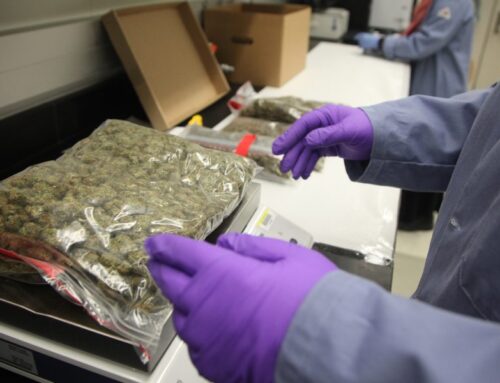Advertisers say Meta’s content-moderation changes make them uneasy. They won’t stop spending.
January 8, 2025
Advertisers say Meta’s content-moderation changes make them uneasy. They won’t stop spending.
Getty Images
- Some advertisers are expressing concerns about Meta’s commitment to brand safety.
- Meta this week unveiled a new approach to content moderation, removing third-party fact-checkers.
- Many ad industry insiders doubt it’ll lead to major spending shifts, however.
Meta’s new plan to shake up its content-moderation policies has some advertisers worried about the social giant’s brand-safety standards. Despite that, ad insiders who spoke with Business Insider generally didn’t expect the changes to hurt Meta’s business.
“It’s the final nail in the coffin for platform responsibility,” an ad agency veteran told BI. They and some others interviewed asked for anonymity to protect business relationships; their identities are known to BI.
The industry reaction — or lack of it — reflects both advertisers’ reliance on Meta and the shifting conversation around how brands should approach “brand safety” or “suitability,” which refer to when marketers try to avoid funding or appearing next to content they deem unsuitable.
“A lot of brands have shied away from platforms that are too tied to news or controversy, mostly out of fear of cancel culture,” said Toni Box, EVP of brand experience at the media agency Assembly. “But at some point, we have to ask: Are we missing opportunities to connect with people during meaningful moments because we don’t trust audiences to tell the difference between a news story and an ad?”
The brand-safety tides are shifting
Meta used to bend over backward to address advertisers’ brand-safety concerns. But brands weren’t mentioned in Meta CEO Mark Zuckerberg‘s video announcing the changes or in policy chief Joel Kaplan’s interview on Tuesday morning with Fox News’ “Fox and Friends.”
Instead, their pitch was about preventing the censorship of speech. Meta said it plans to replace third-party fact-checkers with a community-based fact-checking program, addressing criticism that the previous system was too partisan and was often overcorrective. The company also said it would loosen some content moderation restrictions on topics that are “part of mainstream discourse” and be more open to reintroducing political content to people’s feeds.
Meta did give a very brief public nod to advertisers. A Meta spokesperson pointed BI to a LinkedIn post from Meta ads exec Nicola Mendelsohn that said the company continued to be focused on ensuring brand safety and suitability by offering a suite of tools for advertisers. In an email from Meta account reps to ad buyers, copies of which were viewed by BI, the company said it knew how important it was to continue giving advertisers transparency and control over their brand suitability. And in an interview with BI, Meta’s chief marketing officer Alex Schultz said advertisers’ primary brand safety concerns were around hate speech and adult nudity and that its tools would focus on “precision and not be taking down things we shouldn’t be taking down.”
Despite private grumbling from some advertisers about the changes, and how they appeared to be timed to appease incoming President Donald Trump, industry insiders said they don’t expect much public blowback on Meta.
Advertiser boycotts and similar actions were once seen as a point of leverage for marketers. One high-profile example was the 2020 #StopHateFor Profit movement when hundreds of major brands protested Meta’s policies on hate speech and misinformation.
But brand safety has recently become a political hot potato and been a flash point for some influential, right-leaning figures.
Last year, the chairman of the House Judiciary Committee, Jim Jordan, began investigating whether advertisers had illegally colluded to demonetize conservative platforms and voices. Elon Musk’s X went on to sue the Global Alliance for Responsible Media, the brand-safety initiative at the center of Jordan’s investigation, and some of its advertiser members after they withdrew ad dollars from the platform. GARM discontinued activities days later. Jordan has continued to press advertisers about their involvement in GARM, and X’s litigation against it and some of its members is ongoing.
A media agency employee told BI that they had clients who were now more cautious about criticizing platforms in public or saying they would pull spending.
Industry analysts also said that — politics aside — many marketers would likely continue to spend with Meta so long as it delivered them the audiences and ad performance they had come to expect. Meta commands about 21% of the US digital ad market, behind only Google, according to data firm EMARKETER.
“For us, after Google, Meta is the next-best performer as far as ROI is concerned,” said Shamsul Chowdhury, VP of paid social at the digital ad agency Jellyfish, referring to the return on investment advertisers get from their campaigns.
Advertisers are split on whether the changes will improve Meta’s platforms
Some advertisers who spoke with BI said they had outstanding questions about the new thresholds Meta would apply to removing posts, what’s on the road map for monitoring trends around misinformation, and whether they would still be able to effectively apply their own third-party brand suitability software to content on Meta’s apps.
Advertisers said they would pay close attention to how Meta’s Community Notes-like feature would work in practice, especially as some hadn’t been impressed with X’s performance in this area with a similar feature.
“This is a major step back and likely going to result in serious issues where social platforms, not just Meta, are going to hide behind the notion that their users do the moderation and fact-checking for them and they are free speech platforms,” said Ruben Schreurs, CEO of the marketing consultancy Ebiquity.
It’s not entirely clear how effective X’s Community Notes have been. A study published last year by researchers at the University of Luxembourg, University of Melbourne, and JLU Giessen concluded that X’s “Community Notes might be too slow to effectively reduce engagement with misinformation in the early (and most viral) stage of diffusion.” Still, a separate study from the Qualcomm Institute within UC San Diego found Community Notes helped counter false information about Covid vaccines.
Some advertising execs supported Meta’s announcement. Two media agency reps said increasing the number of conversations people are having on the platform could benefit Meta and advertisers alike by boosting engagement.
“I think the best news is free speech and mitigation of harmful or dangerous content remains the primary focus of this maturing program, and Meta has taken a forward position here,” said John Donahue, founder of the digital media consultancy Up and to the Right.
Mike Zaneis of the ad initiative the Trustworthy Accountability Group said Meta’s announcement should be seen as an evolution of the platform’s brand-safety standards and not a retreat from protecting users and marketers.
“The speed and accuracy of the Community Notes tool is impressive and it’s the increased transparency that makes a fundamental difference for users and marketers alike,” Zeneis said of X’s implementation of the concept so far. “If something seems to be working, we shouldn’t discourage others from adopting the approach just because it hasn’t been precisely tested.”
Search
RECENT PRESS RELEASES
Related Post



